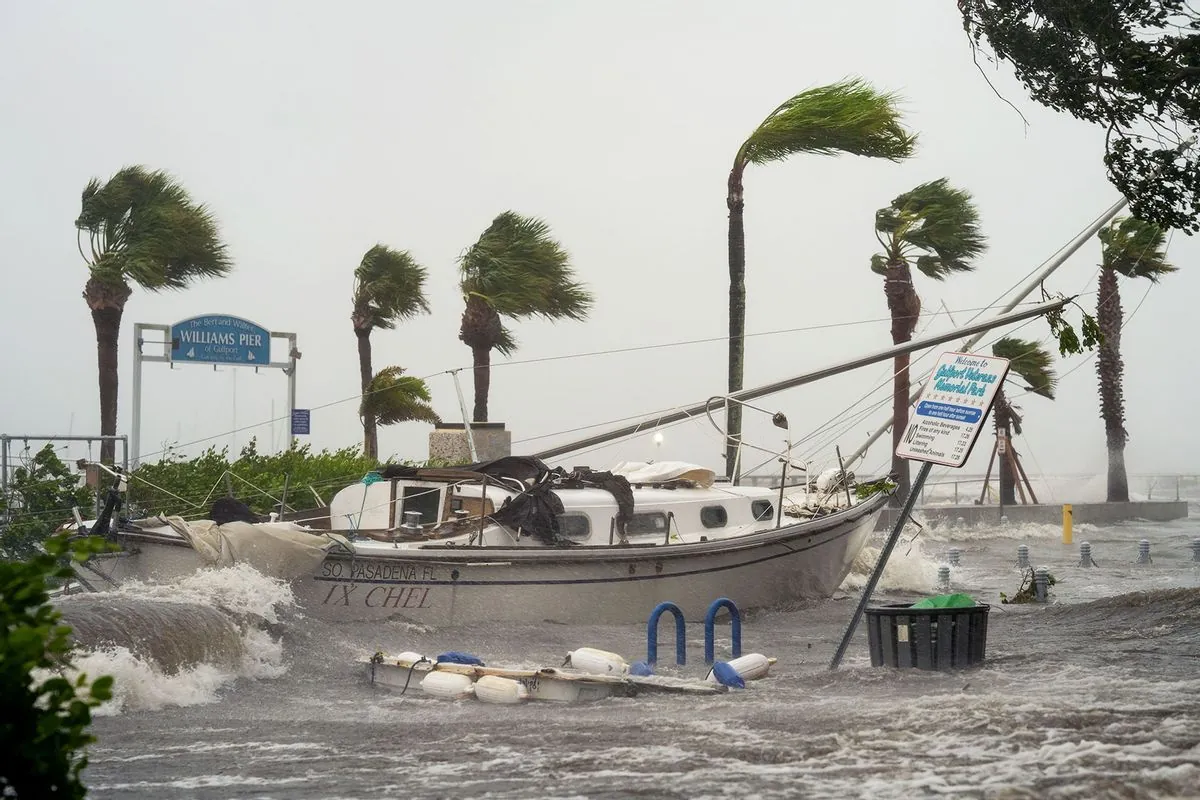Hurricane Helene's Devastating Path: Multi-State Destruction Unfolds
Hurricane Helene wreaked havoc across southeastern US, causing widespread flooding, fatalities, and infrastructure damage. The storm's size and speed led to destruction from Florida to Tennessee.

Hurricane Helene, a powerful storm that made landfall on September 26, 2024, has left a trail of destruction across multiple southeastern states. As of September 29, 2024, the death toll has reached at least 64, with widespread damage reported from Florida to Tennessee.
The storm's impact began in Florida, where its 140 mph winds generated a significant storm surge along the Gulf Coast. The Big Bend area, where the Florida Peninsula meets the Panhandle, bore the brunt of Helene's initial landfall. This region, which had already experienced Hurricanes Idalia and Debby within the past 13 months, faced severe coastal erosion and property damage.

In Georgia, Helene's effects were equally devastating. Atlanta experienced record-breaking rainfall, with over 11 inches recorded in a 48-hour period - the highest since record-keeping began in 1878. The deluge led to widespread flooding, submerging vehicles and necessitating numerous rescues.
North Carolina's western mountains, particularly the Asheville area, suffered from massive flooding and mudslides. The Blue Ridge Mountain city, known for its vibrant arts scene and historic architecture, saw large portions submerged, with communication and road access severely compromised.
South Carolina faced its own set of challenges, with falling trees causing multiple fatalities. The storm's impact extended to power infrastructure, leaving over 40% of the state without electricity at one point. In Saluda County, part of the Piedmont region, two firefighters lost their lives when a tree fell on their vehicle during an emergency response.
Tennessee grappled with overflowing rivers and threatened dams. A particularly dramatic situation unfolded at Unicoi County Hospital near the North Carolina border, where patients had to be evacuated by helicopter due to rising floodwaters from the Nolichucky River.
Dan Brown, a specialist at the National Hurricane Center, explained that Helene's destructive power stemmed from its size (approximately 350 miles wide), strength, heavy rainfall, and rapid movement. He compared its geographic scale of destruction to historical storms like Hurricane Agnes (1972), Hurricane Hugo (1989), and Hurricane Ivan (2004).
"Systems that get very powerful, large and fast moving unfortunately do bring the potential for impact and damage well inland"
The widespread impact of Hurricane Helene serves as a stark reminder of the potential for tropical systems to cause significant damage far from coastal areas. As communities begin the process of recovery and rebuilding, the event underscores the importance of heeding evacuation orders and being prepared for the far-reaching effects of such powerful storms.


































